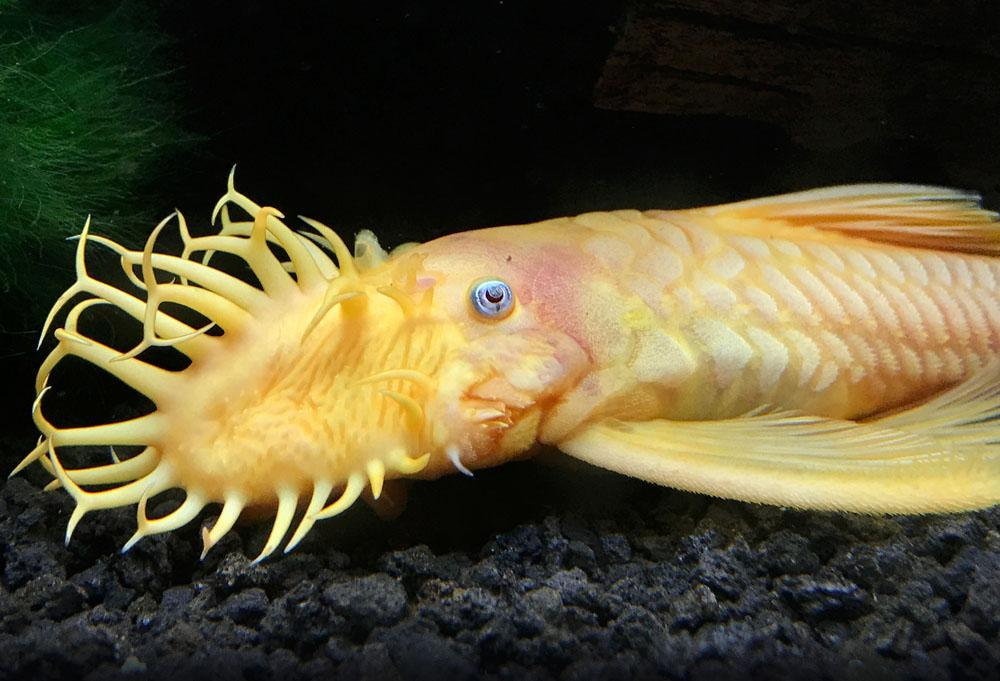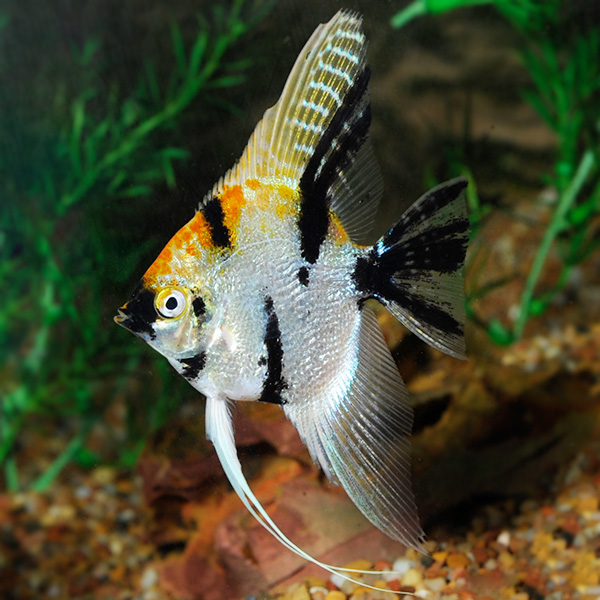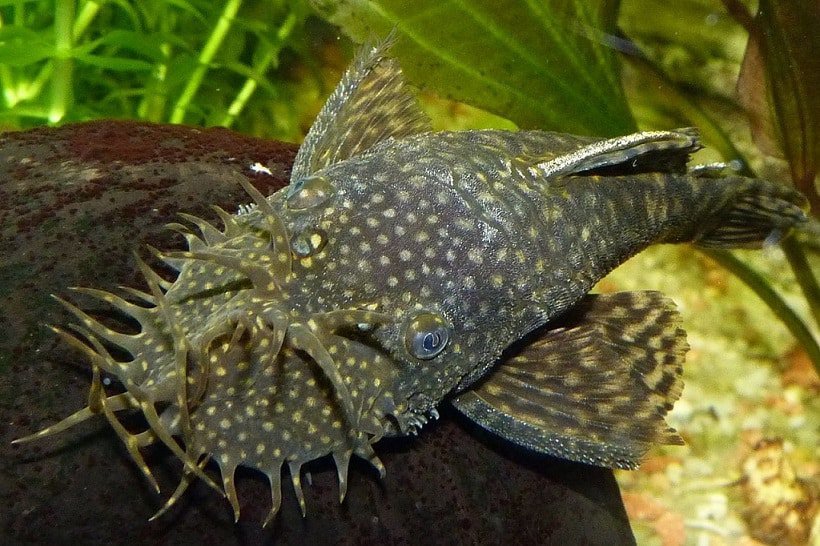The Red Peacock Cichlid (Aulonocara hansbaenschi or A. stuartgranti, depending on taxonomy) is a stunning species endemic to Lake Malawi. This relatively peaceful maternal mouthbrooder inhabits transitional zones where rocky shores meet sandy bottoms. Its vibrant colors, manageable temperament, and fascinating breeding behaviors make it a popular choice for experienced aquarists who can maintain the specific conditions it requires.
Quick Facts
- Common Names: Red Peacock Cichlid, Firebird Cichlid, African Peacock
- Scientific Name: Aulonocara hansbaenschi (A. stuartgranti variant debated)
- Natural Range: Endemic to southeastern Lake Malawi (Masinje, Fort Maguire, Mara Point, Thumbi West Island)
- Size: 9–12 cm (3.5–4.7 inches) standard length
- Lifespan: 5–8 years
- Temperament: Peaceful to semi-aggressive
- Minimum Tank Size: 183 liters (90 cm × 45 cm footprint)
Natural Habitat
- Zones: Intermediate habitats where rocky shores give way to sandy substrate with scattered rocks.
- Depth Range: Prefers 3–6 meters, where it hides in caves and crevices.
- Behavior: Unlike other Aulonocara, it prefers rocky habitats for foraging and shelter.
Tank Requirements
- Tank Size: Minimum 183 liters (48 gallons) for a small group. Larger aquariums are recommended for long-term care or community setups.
- Substrate: Fine sand to support natural feeding behaviors and prevent ingestion of coarse materials.
- Decor:
- Piles of smooth rocks or caves for territories and hiding.
- Open swimming areas between rock formations.
- Hardwater-tolerant plants like Vallisneria, Anubias, or Sagittaria can be used for aesthetics.
- Filtration & Maintenance:
- Use canister or sump filters with water flow 4–5 times the tank volume per hour.
- Maintain excellent water quality with weekly 30–50% water changes to prevent ammonia spikes and maintain chemical stability.
- Water Parameters:
- Temperature: 24–29°C (75–84°F)
- pH: 7.4–9.0
- Hardness: 179–447 ppm
Diet and Feeding
- Natural Diet: Benthophagous; sifts through substrate to find small invertebrates. Equipped with sensory pores for detecting prey.
- Captive Diet:
- High-quality prepared foods (fine-grade flakes/pellets) with high protein and some vegetable content (e.g., Spirulina).
- Live/frozen foods: Artemia (brine shrimp), chironomid larvae (bloodworms), Tubifex, or mosquito larvae.
- Homemade gel-based recipes combining dried fish food, puréed shellfish, fresh fruits, and vegetables can be cut into small portions.
- Feeding Frequency: Offer 3–4 smaller meals daily to mimic natural grazing behavior and promote growth.
Behavior and Compatibility
- Temperament: Peaceful with most species, but males are territorial, especially during breeding.
- Tank Mates:
- Suitable: Peaceful or moderately aggressive cichlids like Copadichromis, Placidochromis, or Otopharynx lithobates.
- Avoid: Other Aulonocara species (hybridization risk), overly aggressive Mbuna, or fish with similar coloration.
- Male-to-Female Ratio: 1 male to 4–6 females to reduce male aggression and protect females from harassment.
Breeding
- Reproductive Behavior: Maternal mouthbrooder. Males display to attract females to flat rocks or sandy patches for spawning.
- Breeding Setup:
- Include flat rocks and open sandy areas for spawning sites.
- Ensure stable water conditions with pH ~8.0 and a temperature of 26–28°C (79–82°F).
- Spawning Process:
- Females lay eggs and immediately pick them up in their mouths.
- Males’ egg spots on their anal fins trick females into receiving sperm while attempting to collect “eggs.”
- Females incubate fertilized eggs in their mouths for up to 4 weeks, during which they do not eat.
- Fry Care:
- Fry may have yolk sacs upon release; do not feed until sacs are absorbed.
- Provide Artemia nauplii or finely crushed flake food once free-swimming.
- Fry can begin to show sex-specific traits at 4 months.
Key Considerations
- Water Quality: Pristine water conditions are critical to prevent disease and stress.
- Avoid Hybridization: Do not mix with other Aulonocara species to maintain genetic purity.
- Over-filtration: Necessary due to sensitivity to fluctuating parameters.
Notes
The Red Peacock Cichlid is often referred to by various vernacular names, including “Firebird Cichlid” and “African Peacock,” depending on location and strain. While its taxonomy remains debated, its beauty and unique traits make it a standout in Lake Malawi cichlid collections.




Reviews
There are no reviews yet.